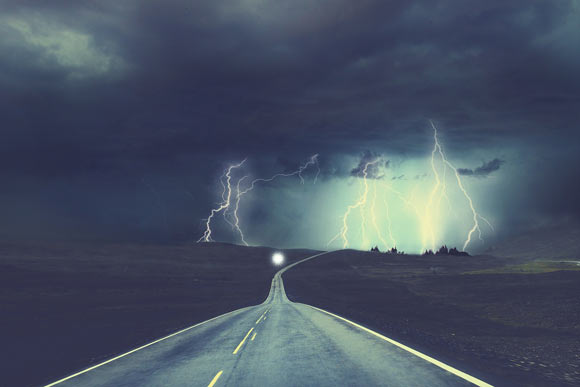Durham University professors Brian Tanner and Giles Gasper have found a credible description of ball lightning in a monastic chronicle compiled and composed by Gervase of Canterbury (Gervasus Cantuariensis or Gervasius Dorobornensis) around 1200 CE. The account predates the previous earliest known description of ball lightning recorded in England by nearly 450 years.

Ball lightning, usually associated with thunderstorms, is unexplained and has been described as a bright spherical object on average 25 cm, but sometimes up to several meters, in diameter. Image credit: Enrique ELG21 / Sci-News.com.
Gervase of Canterbury (c. 1145 – c. 1210) was a Benedictine monk of the cathedral priory and the author of seven historical works, the most important and substantial of which is his Chronica.
In this work, Gervase stated that ‘a marvellous sign descended near London’ on June 7, 1195.
He went on to describe a dense and dark cloud, emitting a white substance which grew into a spherical shape under the cloud, from which a fiery globe fell towards the river.
Professor Tanner and Professor Gasper compared the text with historical and modern reports of ball lightning.
“Ball lightning is a rare weather event that is still not understood today,” Professor Tanner said.
“Gervase’s description of a white substance coming out of the dark cloud, falling as a spinning fiery sphere and then having some horizontal motion is very similar to historic and contemporary descriptions of ball lightning.”
“If Gervase is describing ball lightning, as we believe, then this would be the earliest account of this happening in England that has so far been discovered.”
Prior to this account, the earliest report of ball lightning from England is during a great thunderstorm in Widecombe, Devon on October 21, 1638.
“The main focus of Gervase’s writings was Christ Church Cathedral Priory in Canterbury, its disputes with neighboring houses and an Archbishop of Canterbury, as well as chronicling the actions of the king and his nobles,” Professor Gasper said.
“But he was also interested in natural phenomena, from celestial events and signs in the sky to floods, famine, and earthquakes.”
The researchers looked at Gervase’s credibility as a writer and a witness, having previously examined his records of eclipses and a description of the splitting of the image of the crescent Moon.
“Given that Gervase appears to be a reliable reporter, we believe that his description of the fiery globe on the Thames on June 7, 1195 was the first fully convincing account of ball lightning anywhere,” Professor Gasper said.
A paper describing the findings was published in the journal Weather.
_____
Giles E.M. Gasper & Brian K. Tanner. A marvellous sign and a fiery globe: a medieval English report of ball lightning. Weather, published online January 26, 2022; doi: 10.1002/wea.4144







